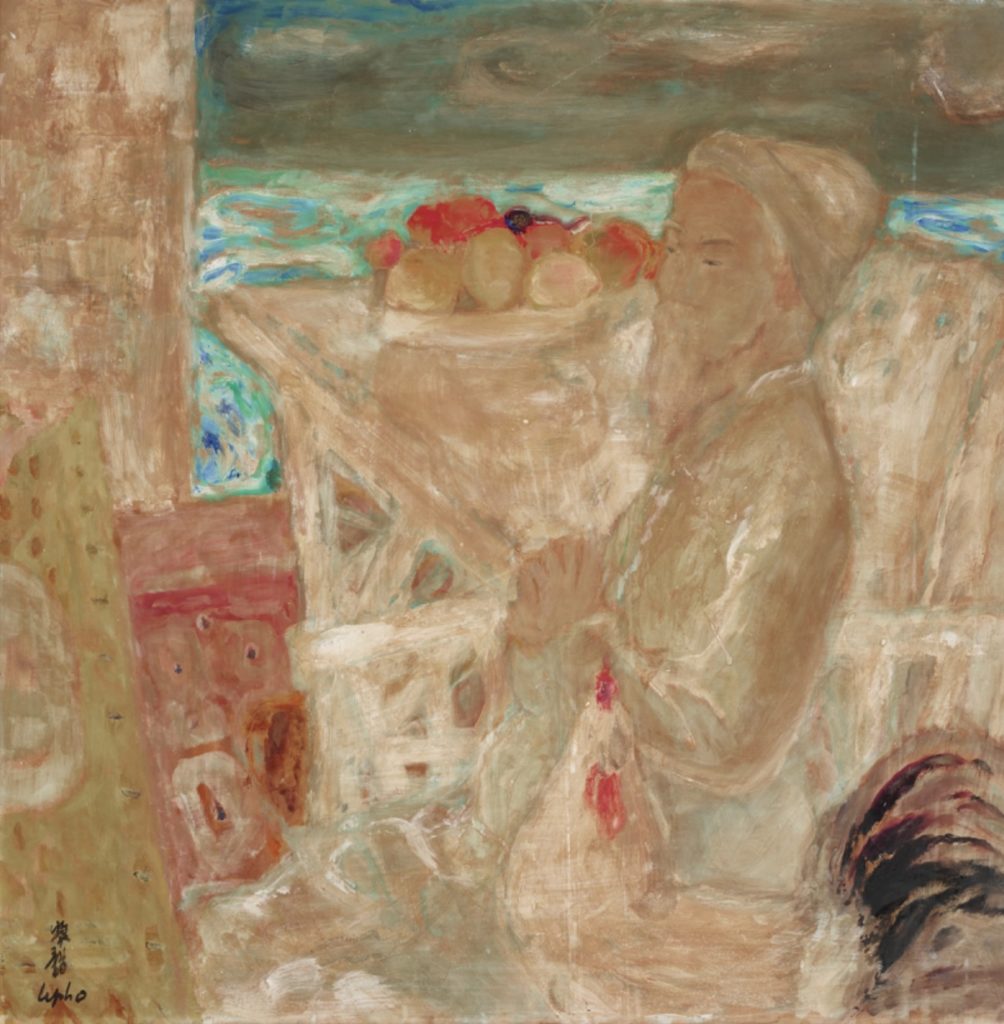Le Pho, « Le Philosophe » 1956, or the artist’s imperturbability
In 1956, Le Pho, who still exhibits at Galerie Romanet – which has brilliantly promoted his work since 1942 – began to escape the gloom of the post-war period, which saw a sharp decline in the art market. Fewer exhibitions, fewer connoisseurs as the country rebuilt, and a shift in the market towards the USA.
Since the end of the war, he had exhibited at the Galerie Roux-Hentschel in 1945, then at the Galerie Art Français in 1946, both in Paris, then in Brussels at the Galerie Van Loo in 1948. But sales dwindled, and from 1950 to 1954 he was Artistic Advisor to the Vietnamese Embassy in Paris, decorating some of the capital’s Vietnamese apartments, including that of Prince Bửu Lộc.
Since the end of the world war, his style has evolved: less ink-black, clean lines and identifiable gouache tones. The line is less present. The painter still paints on silk, but the medium becomes mixed.

With Le Pho, you always have to be on the lookout for allusion. Here, the auspicious dimensions of the format (88X 88cm) speak for themselves. The encounter with Henri Matisse in 1943 continues to bear fruit: the palette remains clear. Bonnard’s spirit still permeates the work.
“Le philosophe” is unique in the painter’s oeuvre.
There’s nothing else to it. Is it a crystallization of the preceding difficult years?
Seated, Asian, in profile, our philosopher with his full moustache and long beard, in traditional headdress, facial features well marked, hands clasped, seems to be paying homage to what could be an ancestral altar.
A bowl of fruit on a table, in a nhà rường that opens onto a luminous garden signified by a very pure blue. The table is depicted in an unbalanced manner, in a chromatic dilution-confusion of the entire work. A rooster (Gaulish?) at the bottom right adds to the symbolic confusion.
Alone, anchored in tradition, deaf to the vicissitudes of time, the philosopher stands unperturbed.
Le Pho?
Jean-François Hubert